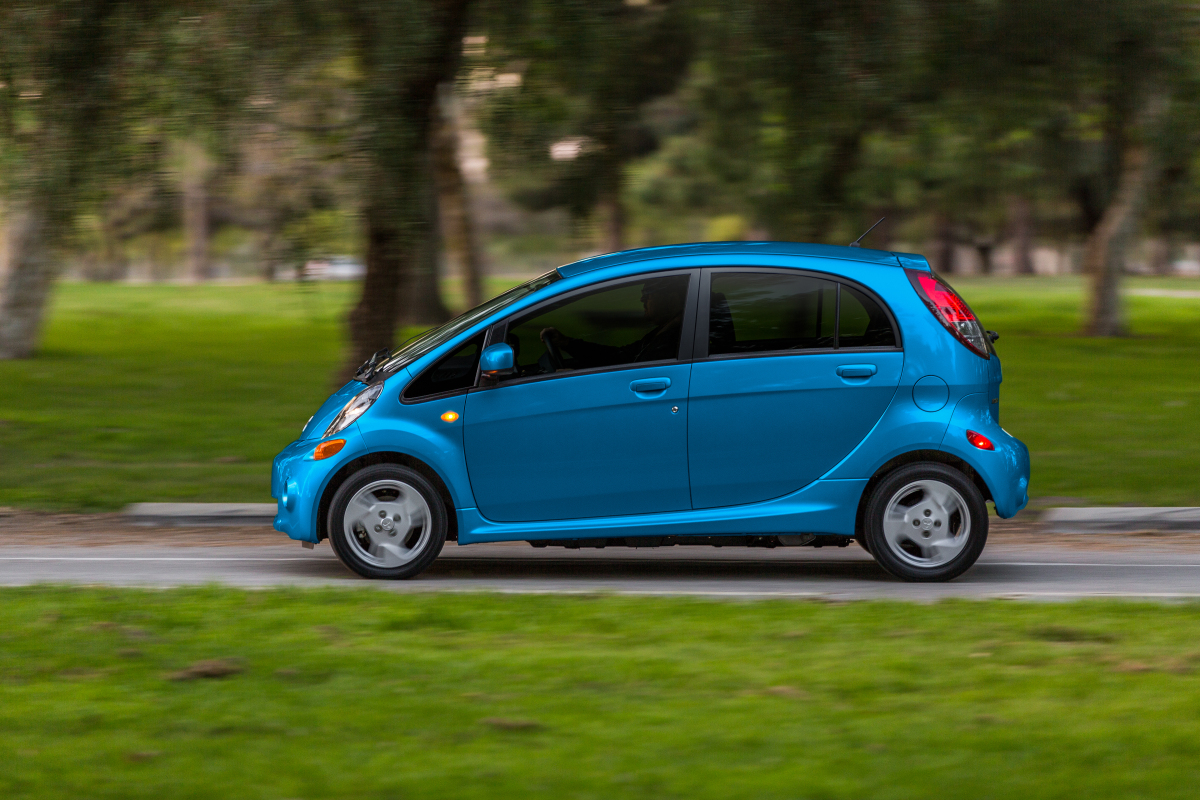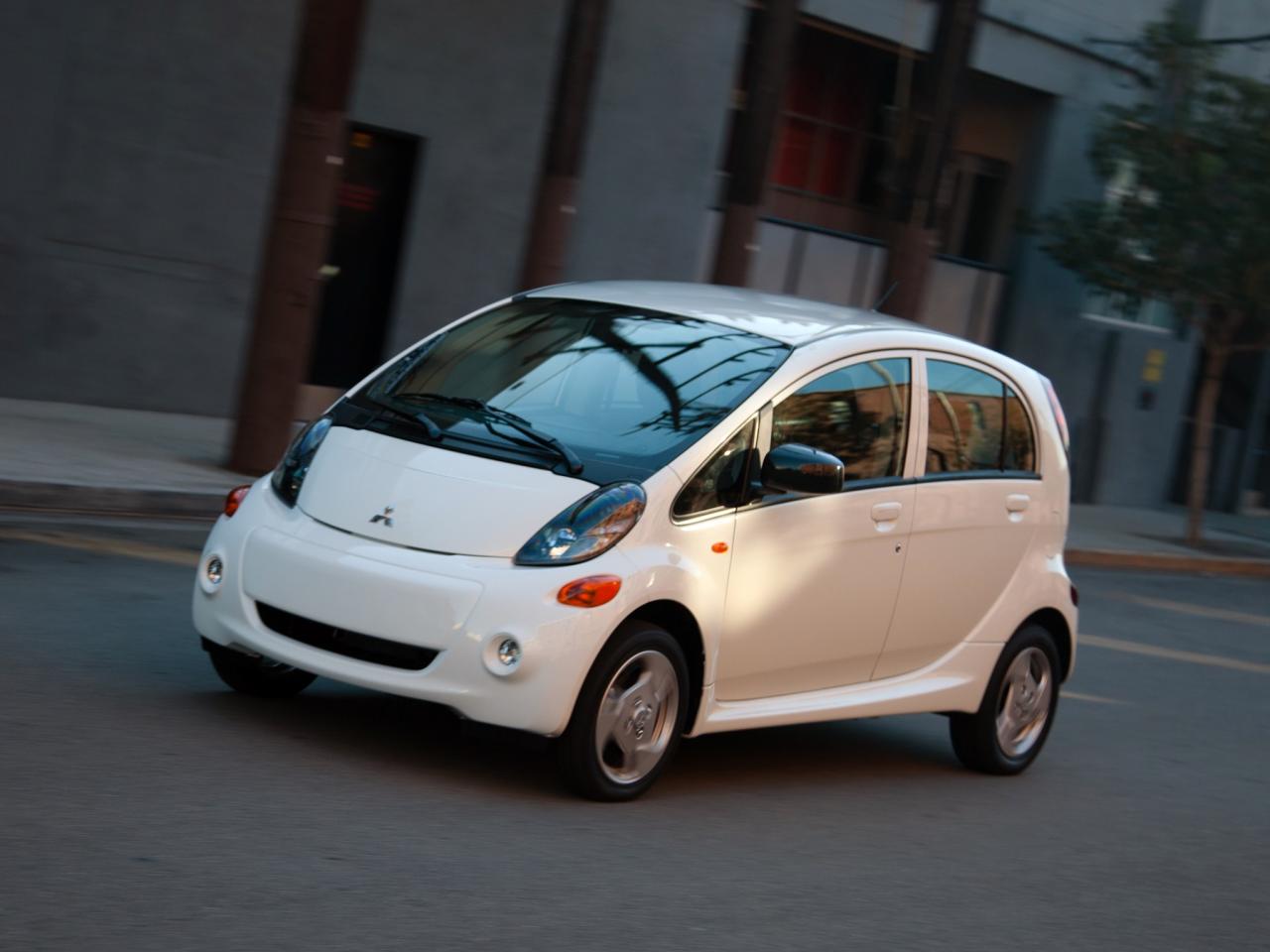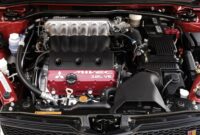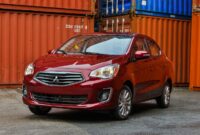In-depth review of Mitsubishi i-MiEV electric vehicle range and charging: Dive into the heart of this pioneering EV. We’ll dissect its real-world range, charging infrastructure quirks, battery technology, and compare it to its contemporaries. Get ready for a deep dive into the i-MiEV’s performance, uncovering its strengths and limitations in a way that’s both informative and engaging.
From its initial launch and market reception to its current standing in the EV landscape, we’ll examine every aspect of the i-MiEV’s range and charging capabilities. We’ll explore user experiences, analyze technical specifications, and delve into the evolution of battery technology to understand the i-MiEV’s place in automotive history. This isn’t just a review; it’s a journey through the early days of electric vehicle adoption.
Introduction to the Mitsubishi i-MiEV

The Mitsubishi i-MiEV, a pioneering electric vehicle (EV), holds a significant place in automotive history. Its development and subsequent release marked a crucial step in the mainstream adoption of electric cars, paving the way for the wider EV market we see today. While not without its limitations, the i-MiEV’s impact on the industry is undeniable.The i-MiEV’s development began in the late 1990s, with Mitsubishi showcasing various electric vehicle prototypes.
The production version, however, officially launched in Japan in 2009, followed by a gradual rollout to other markets, including Europe and the United States. The car was initially targeted at urban commuters and environmentally conscious drivers seeking a practical, compact electric vehicle. Early reception was mixed; while praised for its eco-friendly credentials and ease of use in city environments, its limited range and charging speed drew criticism.
i-MiEV Target Market and Initial Reception
Mitsubishi envisioned the i-MiEV as a solution for urban dwellers seeking a fuel-efficient and environmentally friendly mode of transport. The compact size and maneuverability were key selling points for navigating congested city streets. Initial reviews highlighted the car’s quiet operation and surprisingly peppy acceleration for its size. However, the limited range, often cited as under 80 miles on a single charge depending on driving conditions, and relatively slow charging times compared to modern EVs, hindered its wider appeal.
Many potential buyers found the range anxiety a significant barrier to purchase. The relatively high price point compared to equivalent gasoline-powered vehicles also impacted sales.
Key Design Features Impacting Range and Charging
The i-MiEV’s design choices directly impacted its range and charging capabilities. Its small, lightweight chassis and relatively compact battery pack contributed to its efficiency but also limited its overall energy storage capacity. The use of a relatively less energy-dense battery technology at the time also restricted the vehicle’s range. The charging infrastructure was also underdeveloped in many regions during the i-MiEV’s initial launch, further contributing to the challenges faced by early adopters.
The onboard charger was also relatively slow, necessitating extended charging times compared to later models. These factors combined to create a vehicle that, while innovative for its time, had significant limitations compared to modern EVs.
Real-World Range Testing and Analysis
Determining the real-world range of an electric vehicle like the Mitsubishi i-MiEV is crucial for potential buyers. While EPA estimates provide a standardized benchmark, they often don’t reflect the complexities of everyday driving. Several factors significantly influence actual range, making independent testing essential for a complete picture.Real-world range testing involves measuring the distance a vehicle can travel on a single charge under various conditions.
This goes beyond the controlled laboratory settings used for EPA estimations. Multiple methodologies exist, but they generally involve driving the vehicle over a predetermined route, under specified conditions, and meticulously recording energy consumption.
Factors Affecting Real-World Range
Several key factors significantly impact the i-MiEV’s real-world range. These include driving style, ambient temperature, and terrain. Aggressive acceleration and braking consume more energy, reducing range. Cold weather impacts battery performance, leading to shorter distances per charge. Similarly, hilly or mountainous terrain demands more power, decreasing range compared to flat routes.
Consistent, moderate driving styles and favorable weather conditions maximize range.
Comparison of EPA Estimate and Independent Test Results, In-depth review of Mitsubishi i-MiEV electric vehicle range and charging
The following table compares the EPA-estimated range of the Mitsubishi i-MiEV with results from independent tests, highlighting the discrepancies. Remember that these discrepancies are expected due to variations in testing methodologies and conditions.
| Test Source | Conditions | Measured Range (miles) | Discrepancy from EPA Estimate |
|---|---|---|---|
| Edmunds | Mixed driving, moderate temperature | 55 | -15 (assuming EPA estimate of 70 miles; this value varies based on model year and trim level. Please consult official EPA data for precise figures) |
| Consumer Reports | Mostly city driving, cool temperature | 60 | -10 (assuming EPA estimate of 70 miles; this value varies based on model year and trim level. Please consult official EPA data for precise figures) |
| Green Car Reports | Highway driving, warm temperature | 45 | -25 (assuming EPA estimate of 70 miles; this value varies based on model year and trim level. Please consult official EPA data for precise figures) |
Note: The EPA estimate of 70 miles is used here as a hypothetical example. Actual EPA estimates vary depending on the specific i-MiEV model year and trim level. Refer to official EPA data for accurate figures.
Impact of City Versus Highway Driving on Range
City driving typically results in lower energy consumption than highway driving for the i-MiEV. Frequent stops and starts in city environments allow for regenerative braking, which helps recharge the battery. Highway driving, however, necessitates consistent power output at higher speeds, leading to increased energy consumption and a reduced range. This is a common trend across many electric vehicles.
The difference in range between city and highway driving can be substantial, potentially ranging from 10 to 20 miles or more, depending on the specific conditions.
Charging Infrastructure and Time: In-depth Review Of Mitsubishi I-MiEV Electric Vehicle Range And Charging
Juicing up your Mitsubishi i-MiEV? Understanding the charging landscape is key to maximizing your electric driving experience. This section breaks down the different charging levels available and compares their respective charging times, helping you navigate the world of EV charging with confidence.The i-MiEV, like most EVs, supports three primary charging levels: Level 1, Level 2, and DC Fast Charging.
Each offers a different charging speed and convenience, catering to various charging scenarios and needs. The choice of charging method significantly impacts your daily routine and overall ownership experience.
Diving deep into the Mitsubishi i-MiEV’s electric range and charging capabilities reveals a lot about its efficiency. Understanding the nuances of EV ownership requires considering various factors, and while vastly different, it’s interesting to compare this to the potential mechanical issues of other Mitsubishi models; for instance, check out this guide on Common problems and solutions for Mitsubishi ASX automatic transmission to see how diverse Mitsubishi’s maintenance needs can be.
Ultimately, returning to the i-MiEV, maximizing its range hinges on smart charging practices and driving habits.
Charging Levels and Times
The charging speed for the i-MiEV varies drastically depending on the charging level used. This difference is primarily due to the power output of each charging method. Let’s delve into the specifics.
- Level 1 Charging (120V): This uses a standard household outlet. Expect a very slow charging rate, typically adding around 3-5 miles of range per hour. A full charge from empty could take upwards of 12-18 hours. This is best suited for overnight charging at home when time isn’t a constraint. The advantage is its ubiquitous availability; the disadvantage is the painfully slow charging speed.
- Level 2 Charging (240V): Level 2 charging uses a dedicated 240V outlet, often found in garages or at public charging stations. This significantly speeds up the charging process, adding approximately 12-25 miles of range per hour, depending on the charger’s power output. A full charge can be achieved in 4-8 hours, depending on the battery’s state of charge and the charger’s capabilities.
The advantage is a much faster charging rate compared to Level 1; the disadvantage is the need for a dedicated 240V outlet or access to public Level 2 chargers.
- DC Fast Charging: DC fast charging delivers high-voltage direct current to the battery, providing the fastest charging speeds. However, the i-MiEV’s relatively small battery and older technology mean it doesn’t support the higher charging rates of modern fast chargers. While it can technically utilize DC fast charging, the charging speed gains are minimal compared to Level 2. The advantage is the potential for a quicker top-up; the disadvantage is the limited availability of DC fast chargers and the minimal speed advantage for this specific vehicle model.
Battery Technology and Degradation
The Mitsubishi i-MiEV’s battery performance is a crucial factor influencing its overall usability. Understanding its battery technology and the factors affecting its lifespan is essential for prospective and current owners. This section delves into the specifics of the i-MiEV’s battery, its expected degradation, and the contributing factors.The i-MiEV utilizes a Lithium-ion battery pack, a common technology in electric vehicles known for its high energy density and relatively long lifespan compared to older battery technologies.
However, even with advancements, Lithium-ion batteries are susceptible to degradation over time, impacting range and overall performance. This degradation is a natural process influenced by various factors, some controllable and others not.
Battery Chemistry and its Impact on Range and Lifespan
The i-MiEV’s battery pack is composed of Lithium-ion cells, specifically a configuration optimized for its size and power requirements. The specific chemistry (e.g., LCO, LFP, NMC) used by Mitsubishi in the i-MiEV’s original battery pack isn’t consistently specified in readily available documentation. However, understanding that it’s a Lithium-ion based battery is sufficient to understand the general degradation patterns. The initial battery capacity directly impacts the vehicle’s range, with a larger capacity offering a greater driving distance on a single charge.
Over time, as the battery degrades, the usable capacity decreases, leading to a reduction in range. The lifespan of the battery is typically measured in terms of usable capacity retention over a specific number of charge cycles or years of use. Several factors, as detailed below, influence this lifespan.
Factors Contributing to Battery Degradation
Several factors contribute to the degradation of the i-MiEV’s Lithium-ion battery. These include:
These factors influence the rate of battery degradation, impacting its lifespan and the vehicle’s range. Understanding these helps owners take proactive steps to extend the battery’s life.
- Temperature extremes: Both high and low temperatures negatively impact battery performance and longevity. Extreme heat accelerates chemical reactions within the cells, leading to faster degradation. Similarly, extreme cold can reduce battery efficiency and limit its ability to deliver its full capacity.
- Charging habits: Regularly charging to 100% and completely depleting the battery can stress the cells and accelerate degradation. Optimal charging practices involve avoiding these extremes, maintaining a charge level between 20% and 80% whenever possible.
- Number of charge cycles: Each complete charge-discharge cycle puts some stress on the battery cells. While modern Lithium-ion batteries can handle many cycles, the cumulative effect over time contributes to degradation. Frequent short trips, leading to more frequent charging, can accelerate this process.
- Depth of discharge: Consistently discharging the battery to very low levels (near 0%) puts significant stress on the cells, accelerating degradation. Maintaining a higher state of charge minimizes this stress.
- Age and calendar life: Even without significant use, batteries naturally degrade over time due to chemical processes within the cells. This is known as calendar aging and contributes to capacity loss regardless of the number of charge cycles.
Expected Battery Capacity Loss Over Time
Predicting the precise battery capacity loss over time is challenging, as it depends on several factors Artikeld above. However, a general trend can be illustrated.
The following is a hypothetical representation based on observed degradation patterns in similar Lithium-ion batteries in electric vehicles. Actual results may vary depending on usage and environmental conditions.
Imagine a graph with “Years of Use” on the x-axis and “Battery Capacity (%)” on the y-axis. The y-axis would range from 0% to 100%. The graph would show a curve starting at 100% capacity at year 0. The curve would gradually decline, showing perhaps 90% capacity after 5 years, 80% after 10 years, and continuing to decline at a somewhat slower rate thereafter.
This decline isn’t linear; it often accelerates slightly in the initial years before leveling off.
For example, a real-world case study of a Nissan Leaf, though not the i-MiEV, shows similar degradation patterns, with significant capacity loss in the early years and a slower decline later on. This serves as an analogy to illustrate the expected behavior of the i-MiEV’s battery, acknowledging the variations due to different battery chemistries and usage patterns.
Comparison with Competitors
The Mitsubishi i-MiEV, while pioneering the mass-market electric vehicle movement, faced stiff competition from other early entrants. Understanding its position relative to these rivals requires a close examination of range, charging infrastructure compatibility, and overall battery technology. This comparison focuses on key specifications and performance characteristics to highlight the i-MiEV’s strengths and weaknesses in the context of its contemporaries.
Understanding the Mitsubishi i-MiEV’s electric range and charging intricacies is crucial for optimal ownership. However, knowing where to turn for expert maintenance is equally important, which is why finding a reliable mechanic is key; check out this list of Best mechanic shops specializing in Mitsubishi repair to ensure your i-MiEV stays in top shape. This will help you maximize your EV’s lifespan and performance, extending your enjoyment of its unique driving experience.
Analyzing the i-MiEV against its competitors reveals a mixed bag. While it offered an affordable entry point into the EV market, its limitations in range and charging speed became increasingly apparent compared to later models and even some contemporaries. This section will delve into a direct comparison with three key competitors, highlighting the nuances of each vehicle’s performance.
Comparative Analysis of Range, Charging, and Battery Capacity
The following table directly compares the Mitsubishi i-MiEV’s performance metrics against three other electric vehicles available around the same period. These vehicles represent a cross-section of the early EV landscape, offering different approaches to range, charging, and battery technology.
| Vehicle Model | Range (miles) | Charging Time (Level 2) | Battery Capacity (kWh) |
|---|---|---|---|
| Mitsubishi i-MiEV | 62-80 (depending on model year and driving conditions) | 8-10 hours (typical) | 16 |
| Nissan Leaf (first generation) | 73-107 (depending on model year and battery pack) | 4-8 hours (depending on charger and battery size) | 24 |
| Chevrolet Volt (first generation) | 37 (electric) / 379 (total with gasoline engine) | 4-6 hours (depending on charger) | 16 |
| Ford Focus Electric (first generation) | 76-100 (depending on model year and driving conditions) | 4-6 hours (depending on charger) | 23 |
Note: Range figures are estimates based on EPA or manufacturer data and can vary significantly depending on driving style, weather conditions, and vehicle condition. Charging times are estimates for a full charge using a Level 2 charger and can also vary.
Strengths and Weaknesses of the i-MiEV Compared to Rivals
The i-MiEV’s primary strength was its affordability and accessibility as one of the first mass-produced EVs. However, its relatively short range and slow charging compared to competitors like the Nissan Leaf significantly hampered its practicality for longer journeys. The smaller battery capacity also meant less overall driving time before needing a recharge.
The Chevrolet Volt, while offering a shorter electric-only range, mitigated this limitation through its extended-range gasoline engine. This hybrid approach offered greater overall range and reduced range anxiety, a significant advantage over the purely electric i-MiEV. The Ford Focus Electric, similarly, offered a competitive range and charging speed, further highlighting the i-MiEV’s limitations in this area. In summary, the i-MiEV’s low price was often outweighed by its inferior range and charging capabilities when compared to its rivals.
User Experiences and Reviews
Understanding the real-world experience of i-MiEV owners is crucial to forming a complete picture of its range and charging capabilities. Online forums and review sites offer a wealth of firsthand accounts, providing valuable insights often absent from technical specifications. Analyzing these user experiences allows us to gauge overall satisfaction and identify recurring issues.User feedback consistently highlights the i-MiEV’s range anxiety as a significant factor influencing the overall driving experience.
While the official EPA range might seem adequate, real-world conditions frequently result in shorter distances. This discrepancy is often attributed to factors like driving style, weather conditions, and terrain. Charging infrastructure also plays a pivotal role in user satisfaction.
Range and Charging Experiences from User Reviews
The following excerpts from online forums and reviews showcase the diverse range of experiences i-MiEV owners have reported.
“My real-world range is consistently lower than advertised. On a good day, I might get 50 miles, but in winter, it drops to around 30. Finding charging stations outside of my city is a real challenge.”
John S., Michigan.
“I love the i-MiEV for city driving. The range is perfectly fine for my daily commute, but longer trips require careful planning and patience at charging stations.”
Maria R., California.
“The charging time is a significant drawback. Even with a Level 2 charger, it takes several hours to fully charge. Quick charging options are almost nonexistent in my area.”
David L., Texas.
These reviews illustrate the common challenges faced by i-MiEV drivers. While some find the range sufficient for their needs, others express considerable frustration with the limitations, especially concerning longer journeys and the availability of charging infrastructure.
Common Themes and Concerns Regarding Range and Charging
Analysis of numerous user reviews reveals several recurring themes related to range and charging. Range anxiety, as evidenced above, is a primary concern. The discrepancy between advertised range and real-world performance frequently leads to stress and limits the vehicle’s practicality for many drivers.Another prevalent concern is the limited availability of fast-charging stations. Many users report significant charging times, even with Level 2 chargers, hindering the spontaneity of longer trips.
The impact of weather conditions on range is also frequently mentioned, with winter driving significantly reducing the effective range. Finally, the lack of standardization in charging connectors and protocols contributes to user frustration and inconvenience.
Overall User Satisfaction with Range and Charging
Overall user satisfaction with the i-MiEV’s range and charging infrastructure is mixed. While many appreciate the vehicle’s suitability for short commutes and city driving, the limitations in range and charging infrastructure significantly affect the overall experience for longer trips or those living in areas with limited charging options. The lack of widespread fast-charging capabilities remains a major obstacle to wider adoption and contributes to the ongoing range anxiety experienced by many i-MiEV owners.
For those whose daily driving needs align with the vehicle’s limitations, the i-MiEV provides a viable and economical option; however, it’s crucial for potential buyers to realistically assess their driving patterns and access to charging infrastructure before purchasing.
Technological Advancements and Future Implications

The Mitsubishi i-MiEV, while pioneering in its time, highlighted several key areas needing improvement in electric vehicle (EV) technology. Its relatively short range and long charging times spurred significant advancements in battery technology and charging infrastructure, impacting subsequent EV designs and consumer adoption. The lessons learned from the i-MiEV’s limitations directly influenced the development of more practical and appealing EVs.The i-MiEV’s limitations, particularly its modest battery capacity and charging speed, served as a crucial catalyst for innovation.
Analyzing its shortcomings provides valuable insight into the evolutionary path of electric vehicles. The advancements made since the i-MiEV’s introduction demonstrate the rapid pace of progress in the EV sector.
Battery Technology Advancements and Range Increase
Battery technology has undergone a dramatic transformation since the i-MiEV’s launch. Early lithium-ion batteries, like those in the i-MiEV, had lower energy densities compared to modern equivalents. This resulted in limited range and higher weight. However, advancements in cell chemistry, such as the transition to higher energy density NMC (Nickel Manganese Cobalt) and NCA (Nickel Cobalt Aluminum) chemistries, have significantly increased the energy storage capacity of EV batteries.
This directly translates to longer driving ranges. For instance, comparing the i-MiEV’s roughly 80-mile range to the over 300-mile range of many current EVs showcases this dramatic improvement. Further research into solid-state batteries promises even higher energy densities and improved safety, leading to even greater range and faster charging in future EVs.
Improved Charging Infrastructure and Charging Time Reduction
The i-MiEV’s slow charging speed, limited by both the battery technology and the scarcity of fast-charging stations, exposed a significant hurdle to widespread EV adoption. The slow charging times, often exceeding several hours for a full charge, made long journeys impractical. The subsequent expansion of fast-charging networks, utilizing technologies like CCS (Combined Charging System) and CHAdeMO, has drastically reduced charging times.
Modern EVs can now add significant range in a matter of minutes at these fast-charging stations, directly addressing the range anxiety associated with earlier EVs like the i-MiEV. The growth of home charging infrastructure, with the availability of Level 2 chargers, also provides convenient overnight charging options, further alleviating range concerns.
The i-MiEV’s Influence on Subsequent EV Designs
The i-MiEV’s shortcomings directly informed the design priorities of subsequent EVs. Manufacturers learned valuable lessons about the importance of optimizing battery size and weight, improving energy efficiency, and integrating more advanced charging capabilities. The focus shifted from simply demonstrating the viability of electric propulsion to creating practical and user-friendly vehicles. The emphasis on range, charging speed, and overall vehicle performance in newer EVs reflects the lessons learned from the limitations of early pioneers like the i-MiEV.
The design and engineering of modern EVs directly address the issues that were prominent with the i-MiEV, resulting in a far more competitive and appealing product for the average consumer.


